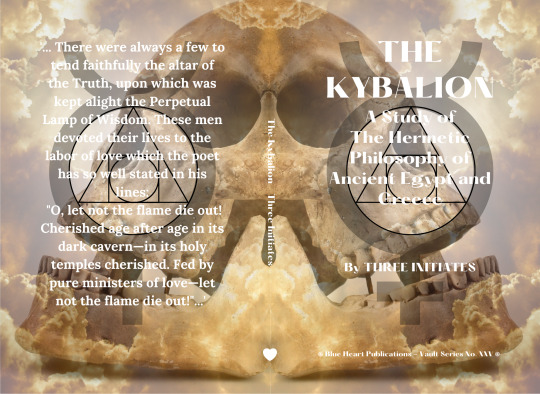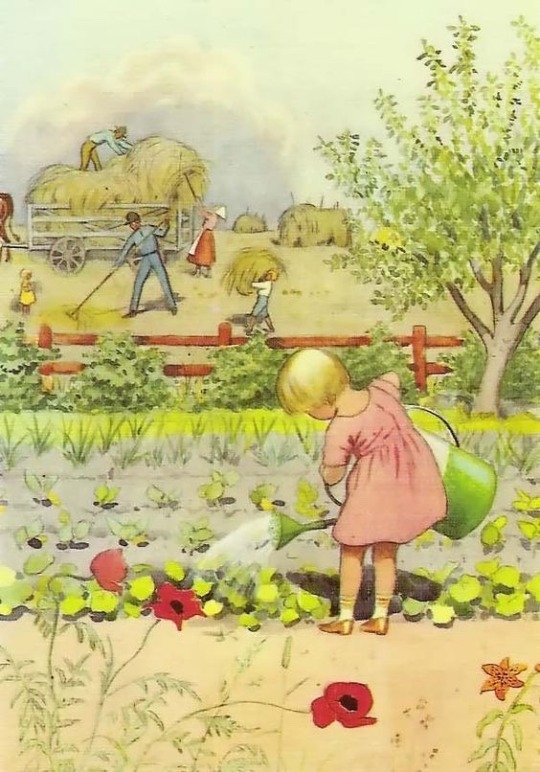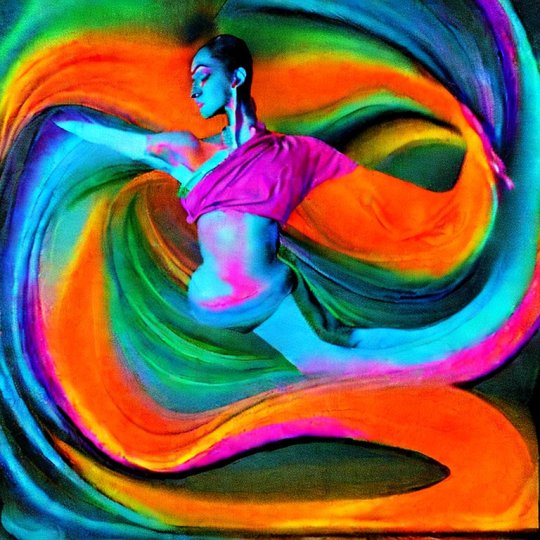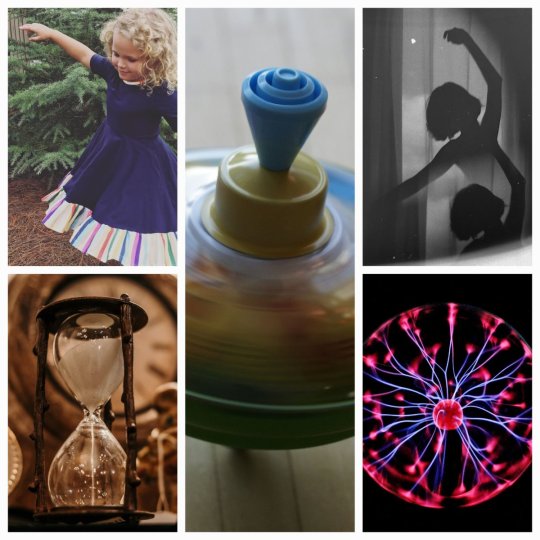#rhythm in philosophy
Text
I’m here to chew on the House of Fëanor like a tiger with a pumpkin full of raw beef, not to defend any of their actions, but, man, sometimes I see Second Kinslaying discourse and I just gotta be like…
i mean they did also kill jesus try to regain the 2 Silmarils from Morgoth first. that was a pretty significant thing that happened. like i understand where you’re coming from here but they very much did try to regain the 2 Silmarils from Morgoth first.
Like what the FUCK do you think the Union of Maedhros and the goddamn Nirnaeth Arnoediad was FOR.
#the silmarillion#feanor and feanor’s kin#endlessly fascinated by the late first age ‘fuck it#maybe if we jump headfirst into the pit we’ve nominally been avoiding digging for ourselves we’ll be able#to salvage 1 sliver of our original pit-free intentions’ feanorian philosophy#deep in my heart I don’t think morgoth REALLY minded when maedhros got cut off that mountain#for all that it stung his pride#bc he’d already gotten a good look at the oath and the rhythm of it in the great music#and laughed and laughed and laughed
103 notes
·
View notes
Text
From a new rhythmic-form, a new movement-form. From a new movement-form, a new thought-form. From a new thought-form, a new material-form.
Ahmed Salman
#quote#AHMED#form#sound#acoustics#movement#motion#reality#matter#material#philosophy#poem#poetry#thought#thinking#novelty#creation#creativity#rhythm#mental#body
33 notes
·
View notes
Quote
There will be times of fear and trembling. There will be times of discouragement and disillusionment. Have courage, smile, keep your chin up, laugh often, be kind to yourself, stay focused, be gracious and appreciative, think happy thoughts, and carry on regardless.
Matthew Kelly, The Rhythm of Life: Living Every Day with Passion and Purpose
#The Rhythm of Life: Living Every Day with Passion and Purpose#Matthew Kelly#quotes#quote#lit#philosophy#life quotes
120 notes
·
View notes
Photo

Music exists when rhythmic, melodic or harmonic order is deliberately created, and consciously listened to, and it is only language-using, self-conscious creatures ... who are capable of organising sounds in this way, either when uttering them or when perceiving them. We can hear music in the song of the nightingale, but it is music that no nightingale has heard.
Roger Scruton, Understanding Music
53 notes
·
View notes
Text
Unlocking the Mysteries of Existence - A Journey Through "The Kybalion"

"The Kybalion: A Study of The Hermetic Philosophy of Ancient Egypt and Greece" by Three Initiates is a timeless masterpiece that unveils the profound teachings of Hermeticism, an ancient and esoteric philosophical tradition that has captivated seekers of wisdom for centuries. This enigmatic book delves into the fundamental principles governing the universe, offering readers a glimpse into the secrets of creation, transformation, and spiritual enlightenment.
At its core, "The Kybalion" explores the Seven Hermetic Principles, which are the foundation of Hermetic philosophy. These principles include the Law of Mentalism, the Law of Correspondence, the Law of Vibration, the Law of Polarity, the Law of Rhythm, the Law of Cause and Effect, and the Law of Gender. Through the wisdom contained within these principles, the book takes readers on a profound journey of self-discovery and understanding of the universe.
One of the strengths of "The Kybalion" is its ability to present complex metaphysical concepts in a clear and accessible manner. The Three Initiates, who remain anonymous, have crafted a text that is both profound and practical. Each principle is explained with examples and analogies, making it easier for readers to grasp the depth of Hermetic wisdom. The authors also emphasize the interconnectedness of these principles, highlighting how they work in harmony to shape our reality.
What sets this book apart is its focus on the practical application of Hermetic principles in everyday life. It encourages readers to harness the power of their thoughts, emotions, and actions to transform themselves and their circumstances. By understanding and aligning with the Hermetic Laws, individuals can achieve personal growth, spiritual evolution, and a deeper connection to the cosmos.
"The Kybalion" also delves into the concept of mental transmutation, which is the process of consciously shifting one's thoughts and emotions to create a more positive and harmonious life. This idea is particularly relevant in today's world, where the importance of mindfulness and the law of attraction is widely recognized.
However, it's important to approach "The Kybalion" with an open mind and a willingness to contemplate its teachings deeply. Some readers may find the ideas challenging or even contradictory to conventional beliefs. Yet, therein lies the beauty of Hermeticism—it invites exploration and introspection, encouraging individuals to question and seek their own truth.
In conclusion, "The Kybalion" is a profound and enlightening work that has the power to transform the lives of those who delve into its pages. It serves as a timeless guide to understanding the mysteries of the universe, the power of the mind, and the path to spiritual awakening. Whether you are a seasoned seeker of esoteric wisdom or a newcomer to Hermeticism, this book offers a valuable and life-changing journey into the heart of ancient philosophical teachings.
"The Kybalion: A Study of The Hermetic Philosophy of Ancient Egypt and Greece" by Three Initiates is available in Amazon in paperback 12.99$ and hardcover 20.99$ editions.
Length of the book: 198 pages
Language: English
Rating: 10/10
Link of the book!
Review by: King's Cat (its a Paw-e-some! book!)
#Hermeticism#Ancient Wisdom#Seven Hermetic Principles#Spiritual Enlightenment#Universal Laws#Mental Transmutation#Law of Correspondence#Esoteric Philosophy#Self-Transformation#Cosmic Harmony#Mindfulness#Law of Vibration#Law of Polarity#Law of Rhythm#Law of Cause and Effect#Law of Gender#Hermetic Teachings#Practical Spirituality#Metaphysical Concepts#Inner Alchemy
6 notes
·
View notes
Text
Listening to a song I liked when I was younger and realizing it had a deeper meaning that makes it even more awesome

#soda rambles#who was going to tell me Chained to the Rhythm is about society’s desensitization and how the “bread and circuses” philosophy is used today#was I actually just supposed to re-examine and realize that myself?#/lhj
14 notes
·
View notes
Quote
The tale exists of an aged Chinese Taoist master named Lin-chi, who, when people would ask him, 'What is the meaning of Taoism?' would respond with a loud scream.
John Little, Warrior Within: The Philosophies of Bruce Lee
#i'm sorry but that's the funniest mental image in the world#bruce lee#warrior within: the philosophies of Bruce Lee#*JJ Bittenbinder voice* 'Now you've thrown them off their rhythm!'#STREET SMARTS!!
45 notes
·
View notes
Text
someone correct me if im wrong, but the engstars main stories are gatekept behind lives that you have to do every few chapters right?
#i cant even bring myself to grind on jpstars so if its like then i guess im never finding out what crazyb actually does in the main story#ooooh foreignstars you want to get rid of all the clunk so bad#ooooh you want to streamline your game and keep in line w the enstars philosophy of keeping the game accessible#even to those who arent good at or dont like rhythm games
7 notes
·
View notes
Text
Portrait Prose
Portrait Prose is a new avant-garde movement in Literature and it has its resemblances to still life painting. Portrait Prose is a writing of art that seeks to embody the still life painting through the prose of novelistic writing. Just as art for art’s sake exists, portrait prose exhibits write for write sake. Reading the literature of portrait prose gives the audience the reality of experiencing a painting.
The basic ingredients of Portrait Prose are:
(a Tone
(b Content
(c Flavor
(d Rhythm
(e Ecstasy
Now what is tone in portrait prose? Tone is the elegance in writing. It is the description of still life objects with precision and exactitude. It is thought translated into reality. The realism of the art object is enthroned into the muse of writing. It is a description in poetic prose. It is a picturesque imagery of art objects.
Now what is content in portrait prose? Content is the transmutation of the picture image of the object into words. Content is clarity of imagery. Words become idealized as the signified and pictorialized as the signifiers.
Now what is flavor in portrait prose? I am using two literary concepts called the langue and the parole. Langue is the way the object speaks to the author, and parole is putting the still life imagery of the art object into a vivid imagery of words. Parole is beauty personified.
Now what is rhythm in portrait prose? Rhythm is the movement of words in a psychic dance. Words are the aura of a hyperbole. Here I use Philosopher Nietzsche’s concept of the Apollonian and the Dionysian. For Nietzsche, Apollonian refers to harmony and melody and the Dionysian refers to rhythm and beat. Portrait Prose is the dance of literature. The writer captures the pathos and beauty of words onto the canvas of writing. Portrait Prose seeks to achieve a balance between the Apollonian and the Dionysian and emerge into an aesthetic ideality.
Now what is ecstasy in Portrait Prose? Ecstasy in portrait prose is the manifestation of catharsis and sublimation. Words become a referential reality as a painting. The audience viewing portrait prose get the metaphoric experience of an orgasm.
To sum up, I would like to say: portrait prose is a still life painting of words. Ordinary everyday objects are artified into cathartic mergers.
Some Examples of Portrait Prose
Falling Leaf
Oh withered leaf, you dance in the wind as an angel on wings; there now you are nearing demise by touching the ground.
Flying Bird
You narcissist on wings—your wings are the poem of the soul; your movements are an aesthetic of pleasure.
Butterfly
You psyche on wings, you ballet as a passionate song; your wings have the flavor of Epicurean taste; your robes are that of an angel; you seek passion on wings.
#Portrait Prose#Theory of the Novel#Literary theory#Philosophy#Still Life#Tone#Content#Flavor#Rhythm#Ecstasy#Nietzsche#Langue#Parole#Apollonian#Dionysian
3 notes
·
View notes
Text
Circular Time in the Andean Cosmovision
This is a cosmogony that understands existence in layers. A human for instance is considered a point in time, space and consciousness. Reality as experienced it’s mostly based on the level of consciousness that the observer possesses. “Space”, through a process of a gravitational dynamic will be correspondent to the ratio of consciousness achieved. “Time” is experienced cyclically in an ever…

View On WordPress
#Andean Cosmovision Philosophy#Andean Ontology and Cosmology#Andean Spiritual Practices#Circular Time Cosmology#Consciousness and Reality#Cosmic Order and Balance#Cosmic Web of Interconnectedness#Cyclical Nature of Time#Gary Urton Andean Studies#Gravitational Dynamics in Cosmogony#Interconnectedness of Life and Nature#Marisol de la Cadena Indigenous Knowledge#Nature&039;s Reflection of Cosmic Rhythms#Non-linear Time Perception#Psychological Impact of Circular Time#Reciprocal Relationships in Nature#Rituals and Ceremonies in Andean Tradition#Shaman#shaman healer#shamanism#Spatial Dynamics in Consciousness#Spiritual Evolution and Rebirth#Time&039;s Cyclical Expansion
0 notes
Text
Navigating the River of Enlightenment: A Journey through Herman Hesse's "Siddhartha: An Indian Tale"

Herman Hesse's "Siddhartha: An Indian Tale" unfolds as a spiritual voyage, a philosophical exploration that transcends time and resonates with seekers across cultures and generations. Originally published in 1922, this timeless novel follows the transformative journey of Siddhartha, a young man in ancient India, as he seeks meaning and enlightenment. The narrative unfolds against the backdrop of the historical Buddha's teachings, yet it remains a deeply personal and introspective account.
The story commences with Siddhartha, the son of a Brahmin, embarking on a quest for spiritual understanding. He rejects the traditional path set by his father and decides to explore life's meaning through personal experience. The novella is divided into parts, each encapsulating a phase in Siddhartha's odyssey—his time among ascetics, encounters with the material world, and eventual union with the river.
At its core, "Siddhartha" is a tale of self-discovery, self-realization, and the pursuit of enlightenment. Hesse weaves a narrative that explores the complexities of existence and the interconnectedness of life. Siddhartha's interactions with various characters, including his friend Govinda, the ascetic Samanas, and the courtesan Kamala, contribute to the novel's rich tapestry of wisdom and introspection.
One of the novella's notable strengths lies in its universal themes. Hesse's prose, translated elegantly into English, possesses a timeless quality that transcends cultural and temporal boundaries. Siddhartha's quest for meaning becomes a mirror through which readers can reflect on their own spiritual journeys, regardless of their background or beliefs.
The river, a central motif in the narrative, symbolizes the cyclical nature of life and the constant flow of time. Siddhartha's repeated visits to the river serve as a poignant metaphor for the human experience—ever-changing, yet eternally connected to a greater cosmic rhythm. The river becomes a silent witness to Siddhartha's evolution, mirroring the transformative power of introspection and the acceptance of life's impermanence.
Hesse's exploration of Eastern philosophy and spirituality is a hallmark of "Siddhartha." The novella introduces readers to concepts such as the interconnectedness of all life (samsara), the path to enlightenment (Nirvana), and the importance of finding one's own path (Dharma). Hesse deftly incorporates these principles into the narrative, providing readers with a window into the profundity of Eastern thought.
"Siddhartha" is a work that invites readers to engage in contemplation and self-reflection. Hesse's narrative style, characterized by its simplicity and clarity, allows readers to delve into profound philosophical ideas without feeling overwhelmed. The novella stands as a testament to the power of literature to inspire personal and spiritual growth.
In conclusion, "Siddhartha: An Indian Tale" is a timeless masterpiece that transcends cultural and philosophical boundaries. Herman Hesse's narrative, rich with wisdom and insight, invites readers on a journey of self-discovery alongside Siddhartha. The novel's enduring relevance lies in its ability to illuminate the universal quest for meaning and enlightenment, making it a must-read for those seeking contemplative literature that resonates across the ages.
Herman Hesse's "Siddhartha: An Indian Tale" is available in Amazon in paperback 10.99$ and hardcover 18.99$ editions.
Number of pages: 156
Language: English
Rating: 10/10
Link of the book!
Review By: King's Cat
#Herman Hesse#Siddhartha#Indian Tale#Spiritual journey#Enlightenment#Self-discovery#Ancient India#Brahmin#Ascetics#Govinda#Material world#River#Wisdom#Philosophy#Universal themes#Timeless#Cyclical nature#Cosmic rhythm#Impermanence#Eastern philosophy#Samsara#Nirvana#Dharma#Contemplation#Self-reflection#Prose#Translation#Simplicity#Clarity#Profound ideas
1 note
·
View note
Text

Biodynamic Agriculture
Rudolf Steiner's biodynamic agricultural principles promote a holistic approach to farming, emphasizing the interdependence of all living organisms within the farm ecosystem.
It encourages organic farming practices, such as the use of natural fertilizers and pest control methods, while avoiding synthetic chemicals. Biodiversity is also emphasized, aiming to cultivate and preserve various plant and animal species to enhance the health and resilience of the farm ecosystem.
This philosophy recognizes the influence of celestial bodies and cosmic rhythms on plant growth and development, and it promotes the production and use of high-quality compost to enhance soil fertility and microbial activity.
Specific herbal and mineral preparations are used as biodynamic preparations to improve soil vitality, plant growth, and overall farm health.
Crop rotation is another important principle, promoting the rotation of crops to optimize soil health and prevent disease and nutrient imbalances. Livestock integration is encouraged to enhance nutrient cycling, soil fertility, and overall farm resilience. Water and energy conservation are also key considerations, striving to minimize resource wastage through efficient irrigation systems and renewable energy sources.
Lastly, biodynamic agriculture views the farm as a self-sustaining organism, aiming to achieve a balanced and harmonious relationship between the different elements of the farm ecosystem.
#biodynamic agriculture#Rudolph Steiner#organic farming#holistic#Biodiversity#farm ecosystem#celestial bodies#cosmic rhythms#food#at the table#food philosophy#nutritional health#homecooking#foodinspiration#sustenance
0 notes
Text
The Cosmic Dance
An Exploration of the Universe’s Nondual GovernanceIntroduction:In the vast expanse of existence, we find the Universe – an intricate tapestry woven from the finest threads of the cosmos. From the gross body, encompassing galaxies and stars, to the ethereal nondual body, this blog delves into the profound interplay between the Universe and its creation. Join me on a philosophical journey as we…

View On WordPress
#Causal Body#Celestial Rhythms#Consciousness#contemplation#Cosmic Awareness#Cosmic Dance#Cosmic Symmetry#Creation#Energy#Existence#Governance#Gross Body#Interconnectedness#Laws of Nature#Nondual Body#Oneness#Philosophy#Reciprocity#Subtle Body#Unity#universe
0 notes
Text
Life is a Dance of Time and Energy: Finding the Rhythm for a Fulfilling Life
Life is an intricate dance of time and energy, and finding a good rhythm between the two is the key to living a fulfilling and beautiful life. Time and energy are two of the most precious resources we have, and how we manage them can have a significant impact on the quality of our lives.
From a philosophical perspective, time and energy are intertwined. We each have a finite amount of time, and…

View On WordPress
#Behavior#biology#Emotions#energy#experience#Fulfillment#intellect#life#Philosophy#physiology#rhythm#Spirituality#Time
0 notes
Text
Navigating the River of Enlightenment: A Journey through Herman Hesse's "Siddhartha: An Indian Tale"

Herman Hesse's "Siddhartha: An Indian Tale" unfolds as a spiritual voyage, a philosophical exploration that transcends time and resonates with seekers across cultures and generations. Originally published in 1922, this timeless novel follows the transformative journey of Siddhartha, a young man in ancient India, as he seeks meaning and enlightenment. The narrative unfolds against the backdrop of the historical Buddha's teachings, yet it remains a deeply personal and introspective account.
The story commences with Siddhartha, the son of a Brahmin, embarking on a quest for spiritual understanding. He rejects the traditional path set by his father and decides to explore life's meaning through personal experience. The novella is divided into parts, each encapsulating a phase in Siddhartha's odyssey—his time among ascetics, encounters with the material world, and eventual union with the river.
At its core, "Siddhartha" is a tale of self-discovery, self-realization, and the pursuit of enlightenment. Hesse weaves a narrative that explores the complexities of existence and the interconnectedness of life. Siddhartha's interactions with various characters, including his friend Govinda, the ascetic Samanas, and the courtesan Kamala, contribute to the novel's rich tapestry of wisdom and introspection.
One of the novella's notable strengths lies in its universal themes. Hesse's prose, translated elegantly into English, possesses a timeless quality that transcends cultural and temporal boundaries. Siddhartha's quest for meaning becomes a mirror through which readers can reflect on their own spiritual journeys, regardless of their background or beliefs.
The river, a central motif in the narrative, symbolizes the cyclical nature of life and the constant flow of time. Siddhartha's repeated visits to the river serve as a poignant metaphor for the human experience—ever-changing, yet eternally connected to a greater cosmic rhythm. The river becomes a silent witness to Siddhartha's evolution, mirroring the transformative power of introspection and the acceptance of life's impermanence.
Hesse's exploration of Eastern philosophy and spirituality is a hallmark of "Siddhartha." The novella introduces readers to concepts such as the interconnectedness of all life (samsara), the path to enlightenment (Nirvana), and the importance of finding one's own path (Dharma). Hesse deftly incorporates these principles into the narrative, providing readers with a window into the profundity of Eastern thought.
"Siddhartha" is a work that invites readers to engage in contemplation and self-reflection. Hesse's narrative style, characterized by its simplicity and clarity, allows readers to delve into profound philosophical ideas without feeling overwhelmed. The novella stands as a testament to the power of literature to inspire personal and spiritual growth.
In conclusion, "Siddhartha: An Indian Tale" is a timeless masterpiece that transcends cultural and philosophical boundaries. Herman Hesse's narrative, rich with wisdom and insight, invites readers on a journey of self-discovery alongside Siddhartha. The novel's enduring relevance lies in its ability to illuminate the universal quest for meaning and enlightenment, making it a must-read for those seeking contemplative literature that resonates across the ages.
Herman Hesse's "Siddhartha: An Indian Tale" is available in Amazon in paperback 10.99$ and hardcover 18.99$ editions.
Number of pages: 156
Language: English
Rating: 10/10
Link of the book!
Review By: King's Cat
#Herman Hesse#Siddhartha#Indian Tale#Spiritual journey#Enlightenment#Self-discovery#Ancient India#Brahmin#Ascetics#Govinda#Material world#River#Wisdom#Philosophy#Universal themes#Timeless#Cyclical nature#Cosmic rhythm#Impermanence#Eastern philosophy#Samsara#Nirvana#Dharma#Contemplation#Self-reflection#Prose#Translation#Simplicity#Clarity#Profound ideas
1 note
·
View note
Text
Ethical Consumption is Least Consumption
by Jonathan Petra Kramarsky

"The ethics of what and how much can be consumed must consider both the consumer and the consumed. Currently, consumption is treated as a right of the consumer—or even further by media and businesses, as an integral part of the economy and human development. Any deviation from these principles carries with it the problem of application. However, if one were to create new principles of consumption, the following could be a start: what is ethical to consume is necessary and least impactful to the world’s potential."
Continue reading here.
#new rhythm zine#zine#zines#online zine#blog#blogs#blog post#anarchy#utopia#future#consumption#ethics#philosophy#ethical consumption#capitalism#solarpunk#punk#society#morality#consumerism#eat the rich#moral philosophy#zine art#essay#essays#creative writing#writers of tumblr#writing
1 note
·
View note